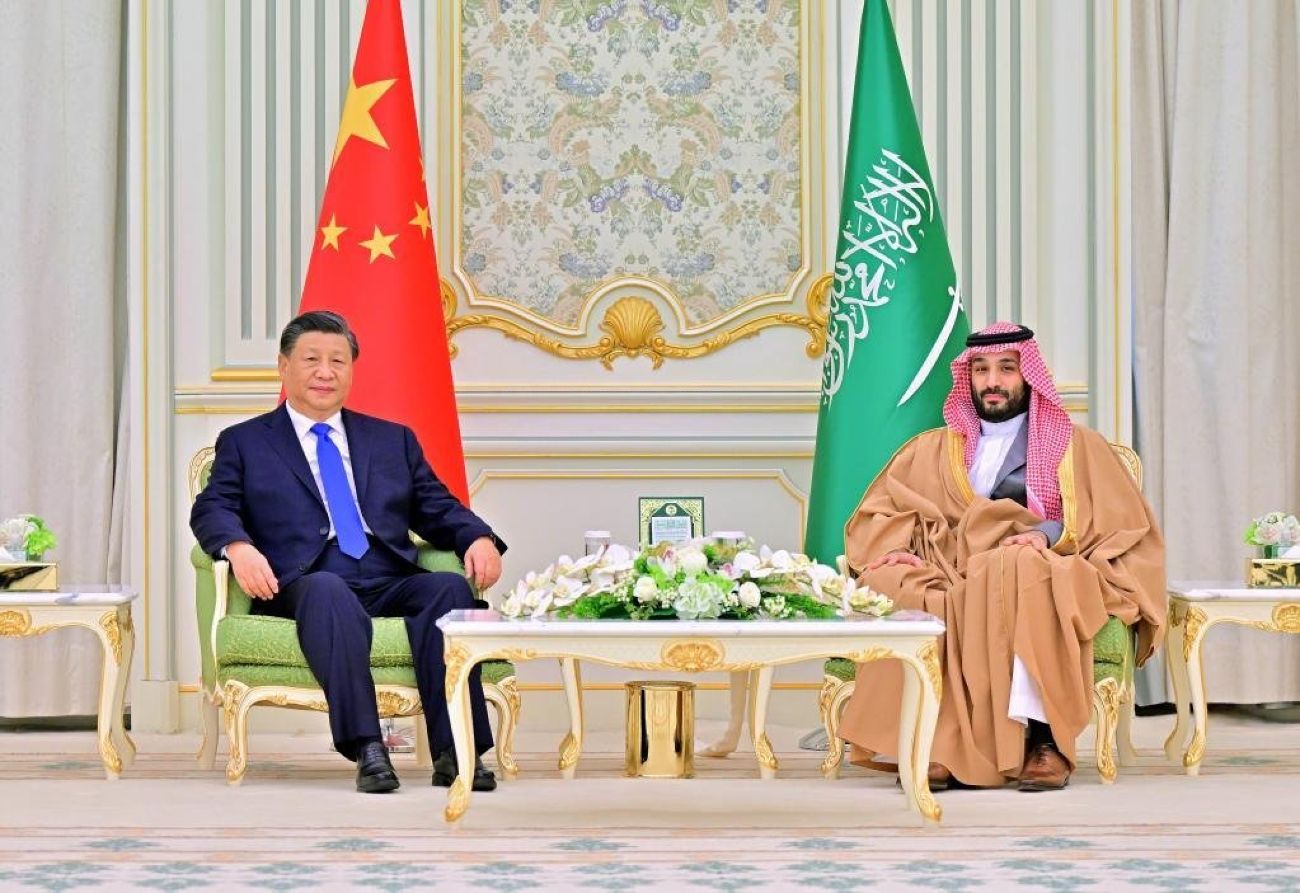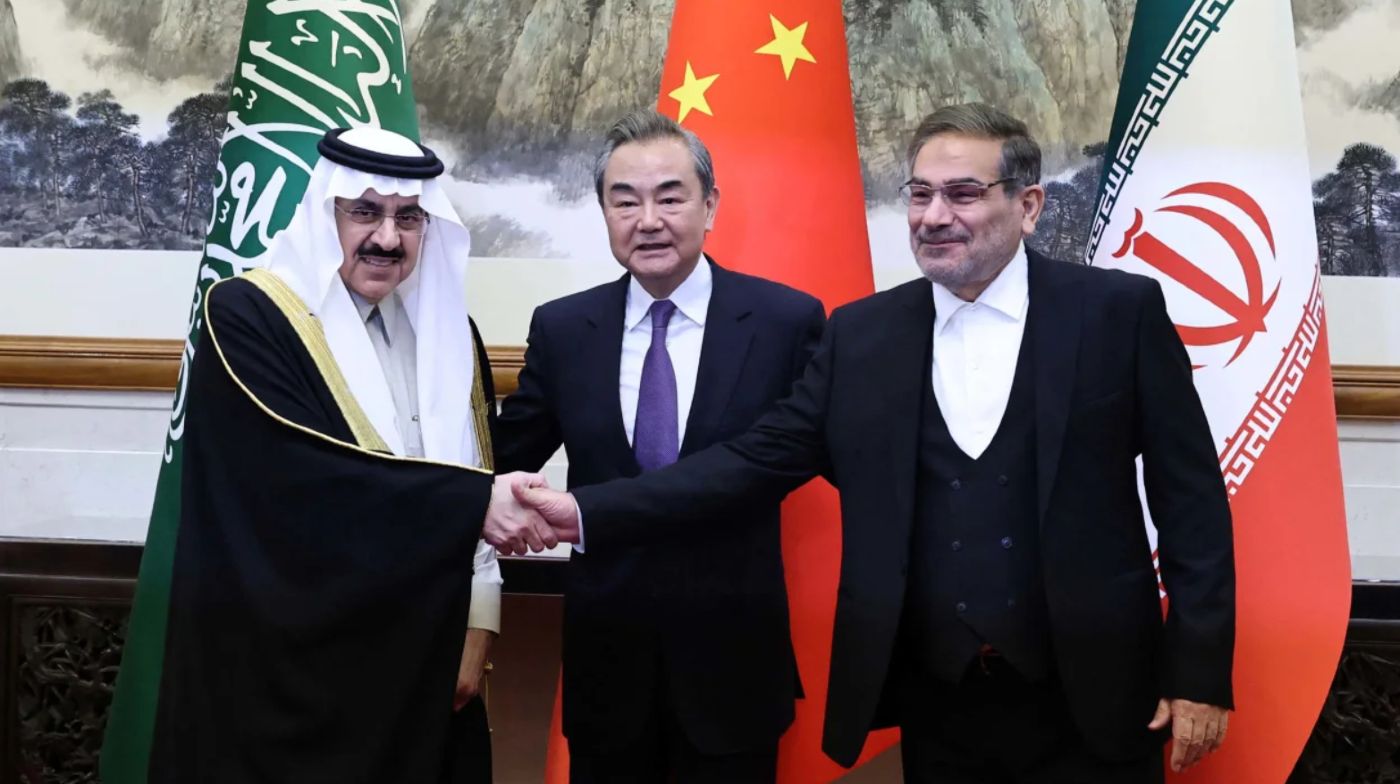The question is this: Is a China-brokered rapprochement between the two major players in the Gulf region a harbinger of an entirely new era in the history of the Middle East?
It is a tricky question even for many veteran journalists who have been keeping close track of old bellicosity that has marred relations between the two countries – Iran and Saudi Arabia.
It is not the first time that the two belligerent countries of the Gulf region have accepted the mediation of a third country. But all earlier attempts have invariably ended in smoke.
The first thing differentiating mediation from previous attempts is that the mediator is not a small or nondescript country. China today is an economic and military power. Apart from that, China is the largest oil importer from the Gulf region’s two oil-rich countries.
It has also made considerable investments in both countries, thus expanding its influence efficiently.
If we are to speak the language of international relations, it will be said that after US’s declining clout in the Middle East, China moved shrewdly to fill the vacuum. Various complicated issues bedeviling smooth relations between some of the region’s states looked straight into the eyes of actors engaged in mediation — Syria, Yemen, Lebanon, and the chronic Palestinian issue beggar no description.
But the major hindrance in the strategy lay in bitterly strained relations between Iran and Saudi Arabia. Unless their concerns were addressed, things would not move forward. Obviously, waters would not flow smoothly unless this logjam was disentangled.
The reduced role of the US in influencing Saudi foreign policy created an opportunity for the mediator(s) to extract maximum cooperation from Iran.
US’ apparent invisibility in the Middle East political landscape relieved Tehran’s embedded skepticism that the US’ footprints in Saudi Arabia meant political and psychological support to the power of the State of Israel. This called for a change in Iran’s foreign policy.
Another factor contributing to Iran’s change of mind is the growing popularity of crown prince Salman(MBS) of Saudi Arabia as an exceptionally insightful reformer who has broken away from the taboos of Islamic orthodoxy. He has challenged the very basis of orthodoxy and injected the spirit of questioning a plethora of cut-and-dried practices observed by conservative Islam for so many centuries.
He gives primary importance to logic after what the Ismailis of the 10-11th century had initiated. Faith has to be grounded in reason. He has questioned the veracity of hadith, the compendium of practices attributed to the Prophet rolled out by distant theologians whose authenticity is suspect.

Iran of Ayatollahs, the last surviving bastion of orthodoxy, is mortally afraid of the evolving renaissance of Islam in its land of birth. The fear of a formidable challenge to the power and pelf of Iranian orthodoxy is more from inside than outside.
Iran never became truly Islamic, is the verdict of history. Throughout the non-Semitic Islamic states – Central Asia, the Caucasus, the Balkans, the Pamirs, the Badakhshan (ancient Tukhara and Aryana), and the Khurasan, all fantasized about the “back to the roots” way of life.
This new thinking among many Islamic societies compels the orthodoxy in Iran to find the exit route. The theocratic regime reads the writing on the wall that decades-old hostility and hatred against the premier Arab State, which has turned into the harbinger of the renaissance of Islamic religion, has lost its vitality and was becoming unwanted baggage for the ummah.
Soon after the Iran-Saudi détente, Riyadh hosted an Arab regional meeting to discuss Syria’s entry into the Arab League. A Saudi delegation also visited Yemen to hold talks with the country’s Iran-backed Shia Houthi rebels, who have been holding control of the capital city of Sana’a.
As a result of negotiations, the Houthis and the Saudi-led coalition began a prisoner exchange. Nearly 800 prisoners were airlifted to rejoin their families.

Riyadh also hosted a Hamas delegation to reconcile with the Palestinian Islamist group that runs the Gaza Strip under Israeli blockade. A few years ago, Saudi Arabia cracked down on Hamas, allegedly in close contact with the Muslim Brotherhood Islamist movement. The Saudi Kingdom considers the movement a dangerous rival.
In recent years, the US and Israel have pushed Saudi Arabia to normalize ties with Israel under the Abraham Accords. However, a hurdle obstructing the deal for positive negotiations is that Riyadh’s hosting of the Hamas delegation will be followed by the hosting of the West Bank-based Palestinian Authority leader Mahmoud Abbas. This is somewhat tricky to resolve.
On March 10, a tripartite joint statement was released in Beijing, which stated that the two Middle East energy giants would reopen their embassies within two months.
The significance of the trilateral statement lies in the fact that apart from the Shia-Sunni divide, ethnocultural differences and contest for regional supremacy, especially after the Ayatollah Khomeini-led Islamic Revolution of 1979, had forced the two countries to move in opposite directions.
For nearly two years, secret meetings were held by the two sides under the Chinese initiative in Iraq and Oman. It was a high-level diplomatic undertaking in which discussions transcended traditional cultural and sectarian distinctions. It has great significance for other spots in the Middle East where conflicts have been raging for many years.
The selection of Iraq and Oman is of special consideration. While Iraq, an oil-producing country with a Shia majority, is yearning to increase its oil exports, Oman follows the Ibadi School of Islamic jurisprudence. It is quite different from the Saudi Sunni Hanbali school and the Iranian Shia Jafari school.
The message going across the Middle East can be summed up as this. The agreement, in the words of Swarajya of March 14 columnist, “represents coming together of disparate strands across Asia from the Mecca to Manchuria; strands which had been kept violently apart by external forces for decades.”
Continuing his assessment, the columnist says whether anyone likes it or not, this is a step towards rehabilitating Iran. The important outcome could mean a reinforced impetus for speeding up the Russia-Iran-India International North-South Transport Corridor (INSTC).
The agreement represents the Middle East’s collective intention to recapture their traditional market share for crude oil or the resurgence of OPEC under Russian lead. And, of course, China will be very much in the Gulf.
- KN Pandita (Padma Shri) is the former Director of the Center of Central Asian Studies at Kashmir University. Views expressed here are of the author’s.
- Mail EurAsian Times at etdesk(at)eurasiantimes.com
- Follow EurAsian Times on Google News




